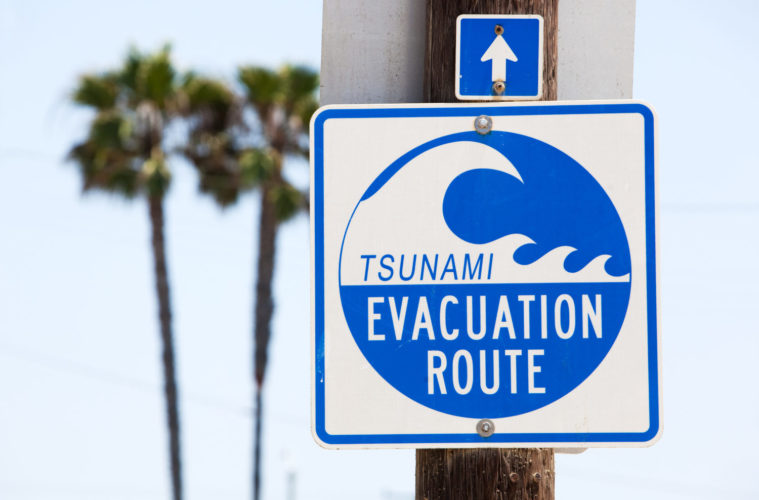Only a handful of disasters can wipe out a civilization in an instant. And a tsunami is one of them. It may look astonishing to watch in films but a tsunami is very much a reality that we should all be prepared for — everyone should know what to do in a tsunami in case the ocean’s waves come crashing on our land.
It’s important to understand how a tsunami works so you can do your best to prepare for it and prevent injuries that one may acquire from it.
Causes of a Tsunami
Tsunamis can be caused by other types of disasters — most of the time, a tsunami is just one of the aftermaths. Earthquakes, for instance, can cause a tsunami to occur. When the tectonic plates beneath the earth’s surface shift, it can disturb the ocean and cause a tsunami; other tsunami causes are volcanic eruptions, landslides, and asteroids — basically, anything that can disrupt the ocean floor.
When a tsunami occurs, the waves of the ocean can travel for as fast as 30 miles an hour. The waves can also be up to 100 feet high — a tsunami doesn’t come in just one single wave. It comes in a series of waves that grow higher and quicker. And those who live near the ocean and the “ring of fire” are more prone to experiencing a tsunami.
What to Do in a Tsunami?
You can expect that a tsunami will interrupt your usual routine — your power supply may be cut off, the risk of a fire is more serious, and your survival instinct will have to be switched on. But there are early warning signs of a tsunami. If you feel (or you’ve been informed) that there was an earthquake, you hear a loud roaring sound from the ocean, or the waves of the ocean are unusual (such as the waves traveling outwards — back into the ocean and not towards the shore), these might mean that there’s a tsunami approaching.
When these unusual ocean behaviors occur, prepare yourself by using these as guidelines:
Before
As stated, a tsunami is just the aftermath of another calamity. Thus, if you’re dealing with an earthquake or volcanic eruption, you must ensure that you survive that ordeal first. Once that’s settled, run from the ocean and run as far as possible. If there’s an evacuation center where you’re living or staying in, you can go there as fast as you possibly can. If you can’t, try to find high ground and stay there and stay calm.
During
If there are still tremors from the earthquake or volcanic eruption, practice the advised survival plan for those — stay in a safe spot, take cover under a steady surface, and if you can’t, crouch and cover your head.
If you’re already in the water, grab something stable or hold on to something that floats — like a raft or tree trunk.
After
As soon as you’re safe, source information from the news to find out what to do next. If you and your loved ones are in an unsafe place, call for emergency responders to rescue you (but be patient because they might also be busy prioritizing more safety and life-compromised people).
Don’t submerge yourself underwater because there might be debris that can injure you. Or even worse, you might get electrocuted from the downed power lines.
In Summary
Tsunamis are a dangerous series of waves that can wipe out almost everything we built on our lands. Even though it’s heart-wrenching to think what a tsunami can destroy, what’s even more devastating is the lives it can take. Therefore, keep an observant eye on the ocean and see if there are early warning signs of a tsunami. As soon as you can confirm that there’s one about to happen, you can use the guidelines above so you know what to do in a tsunami — should it occur near your home or where you’re staying.
Advertising disclosure: We may receive compensation for some of the links in our stories. Thank you for supporting LA Weekly and our advertisers.

